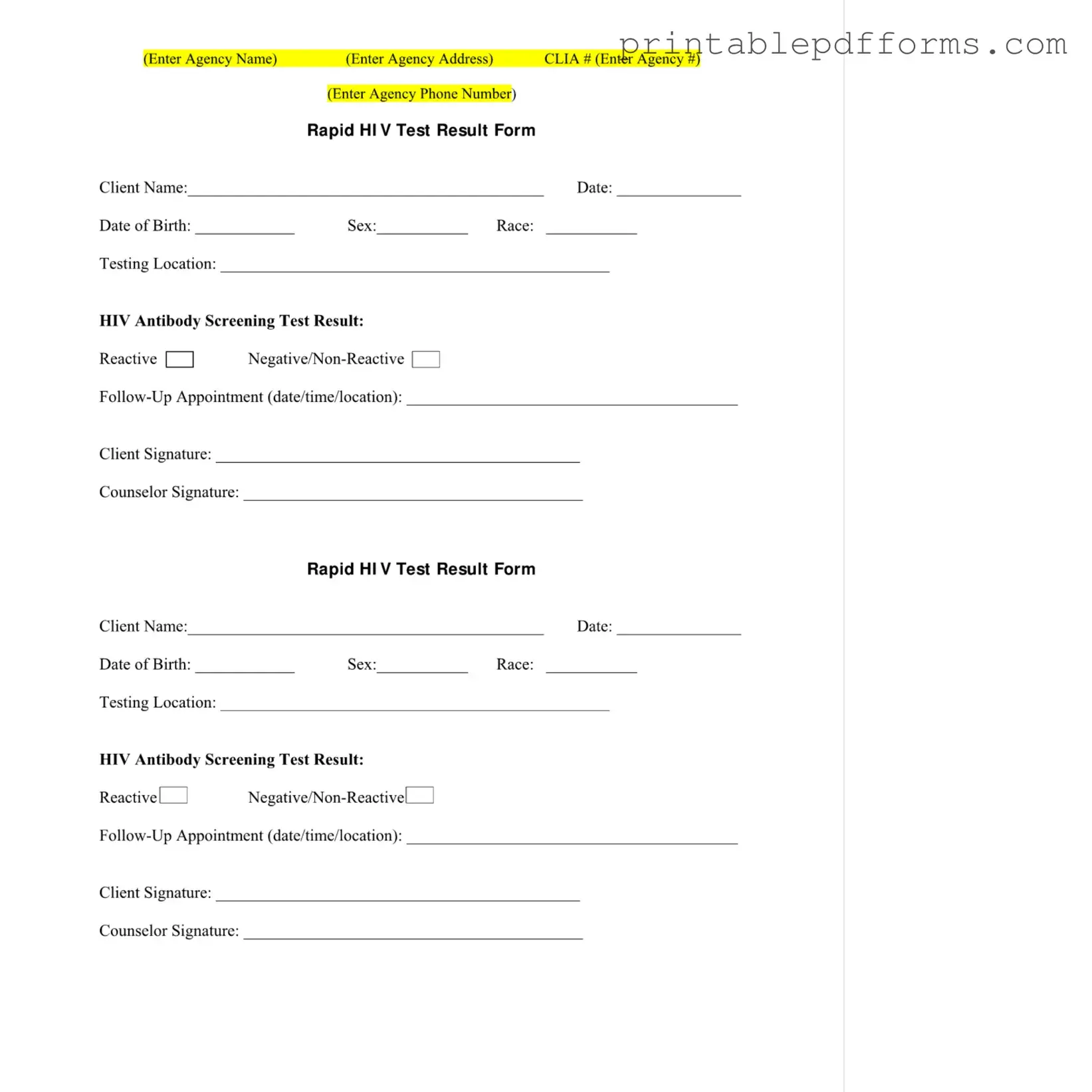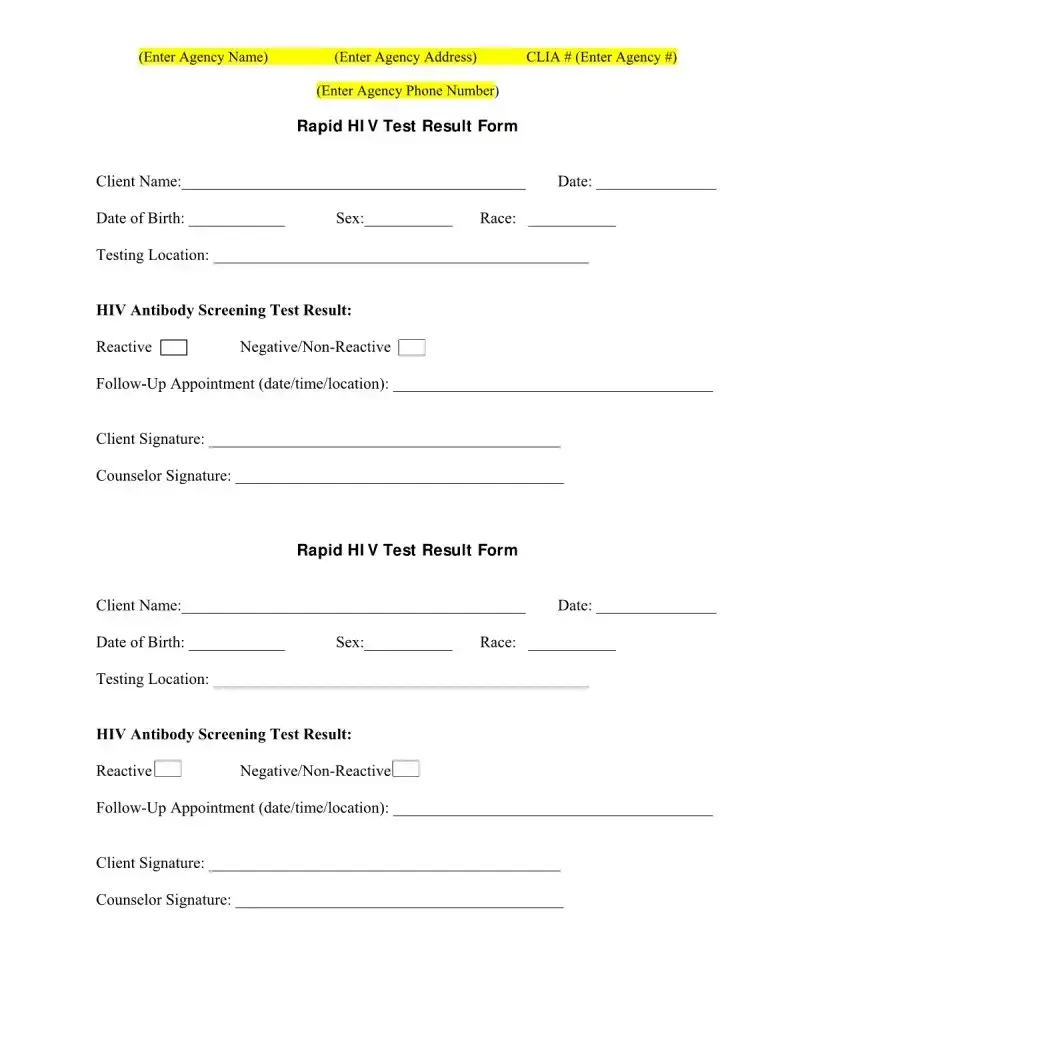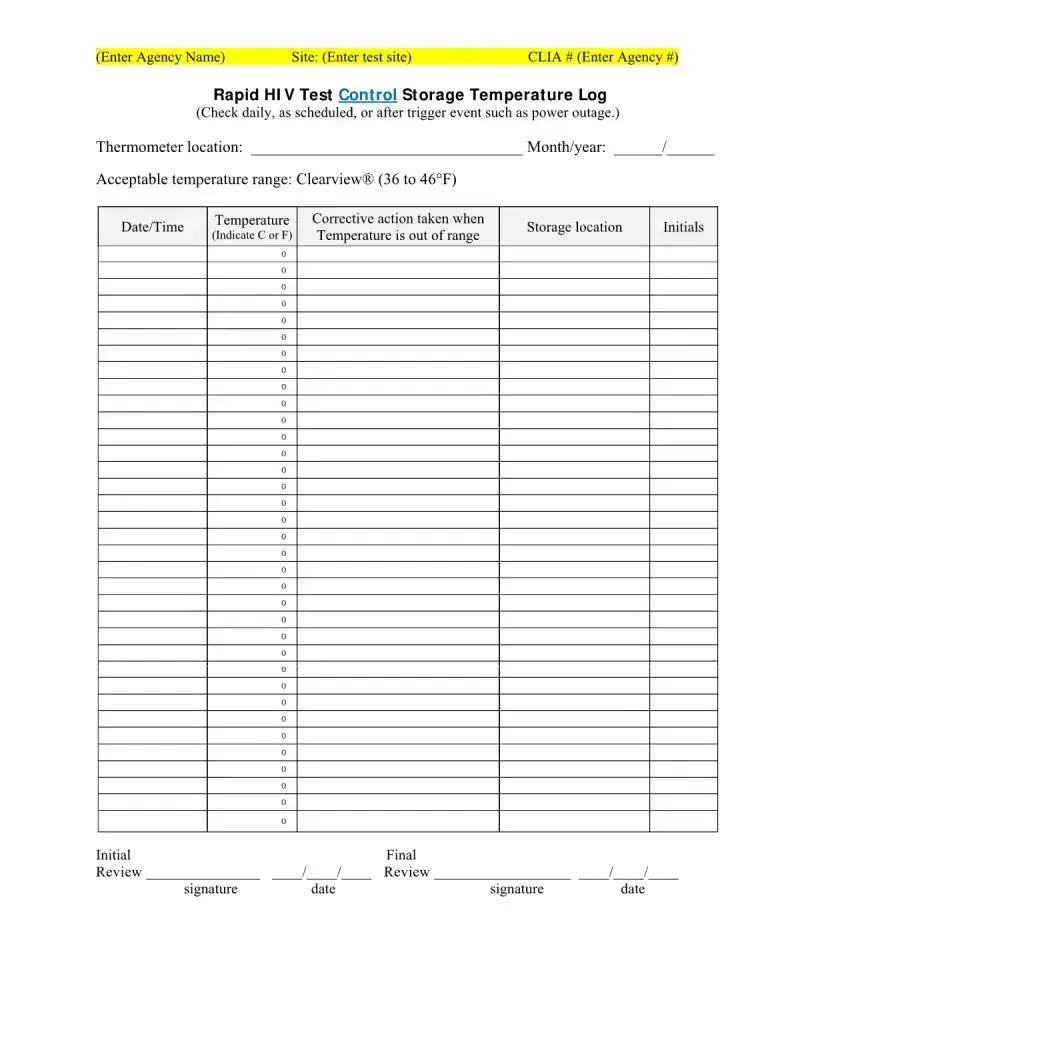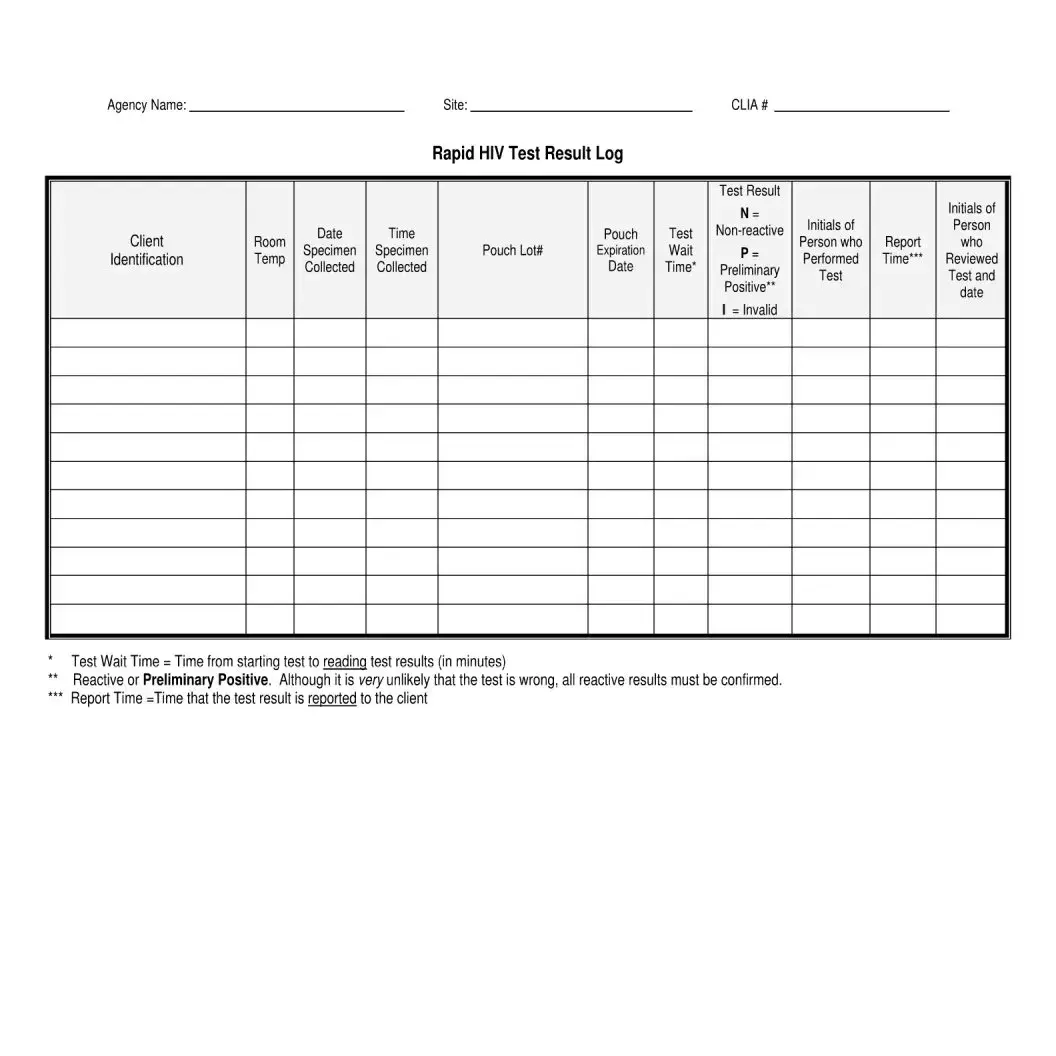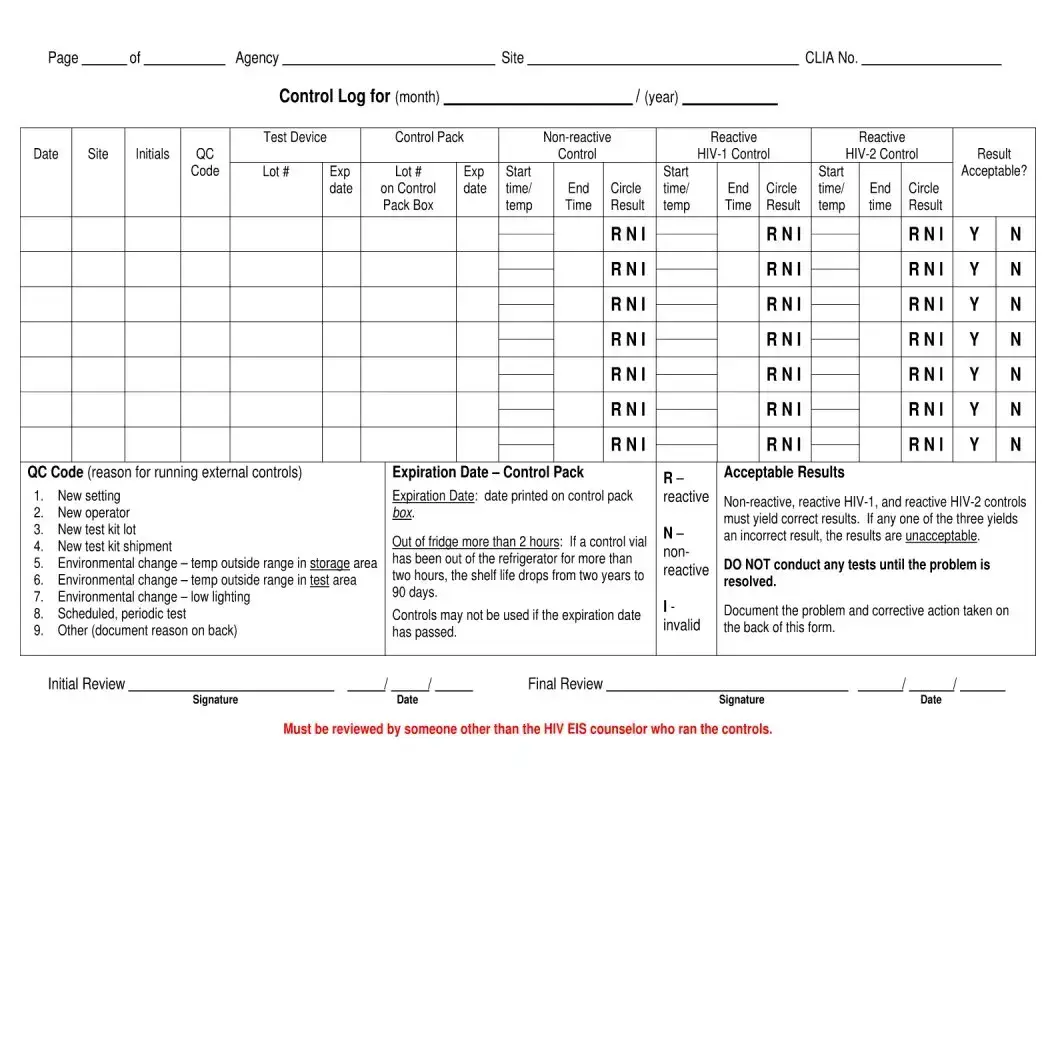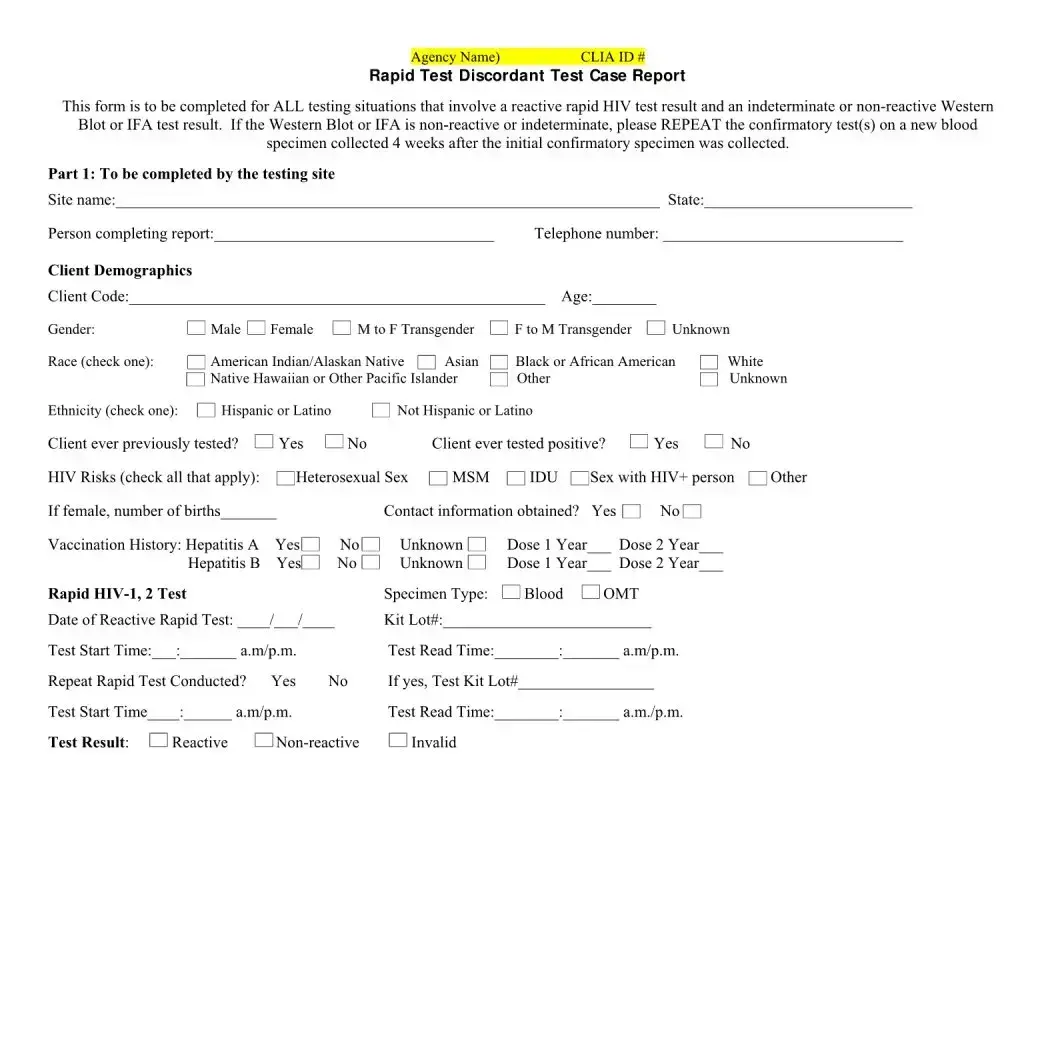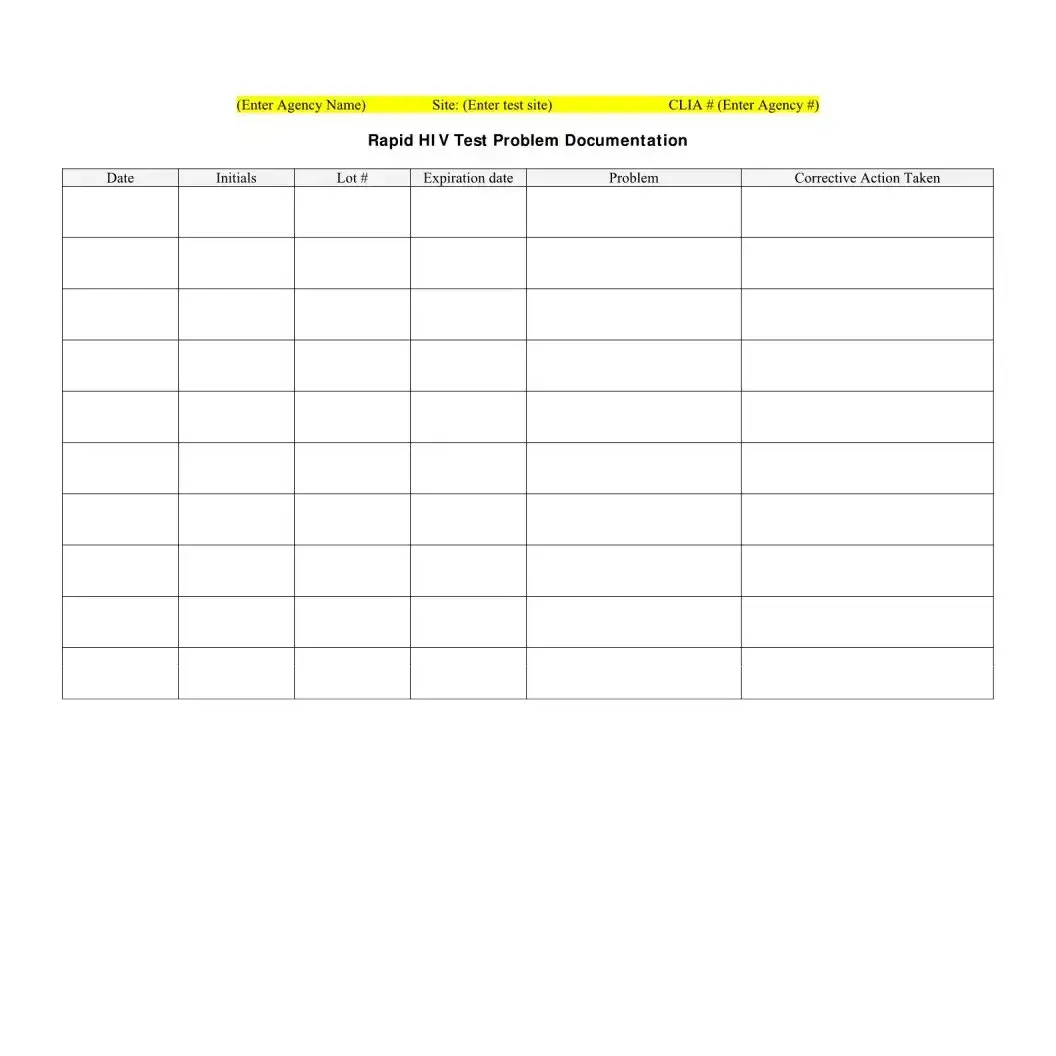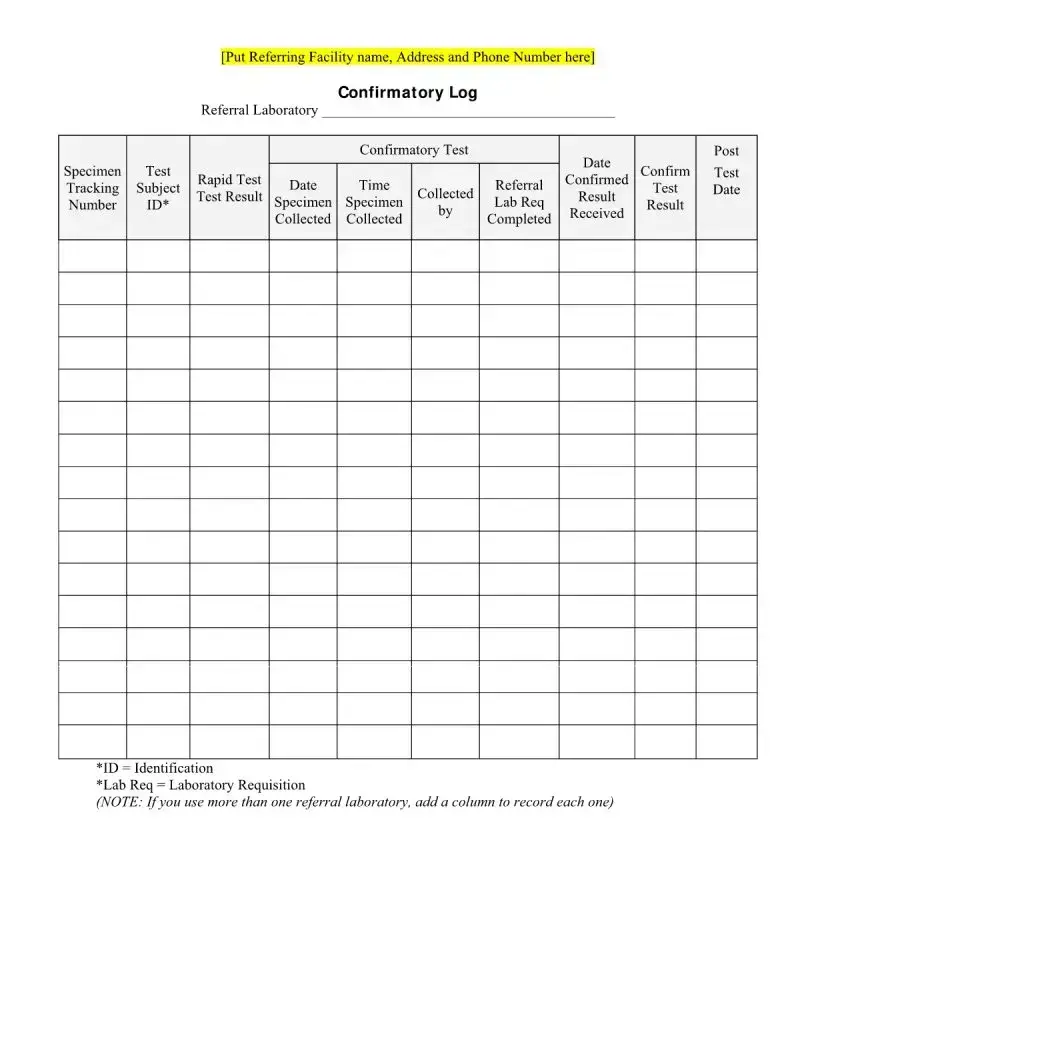The Negative HIV Test form is used to document the results of an HIV antibody screening test. It provides essential information about the client, including their name, date of birth, and testing location. This form serves as an official record that the client has received a negative or non-reactive result, which is crucial for their health management.
The form includes the following details:
-
Client Name
-
Date of Birth
-
Date of the test
-
Sex
-
Race
-
Testing Location
-
HIV Antibody Screening Test Result (Reactive or Negative/Non-Reactive)
-
Follow-Up Appointment details
-
Signatures of the client and counselor
What does a negative result mean?
A negative result indicates that no HIV antibodies were detected in the client's blood at the time of testing. This generally means that the client is not infected with HIV. However, it is essential to consider the timing of the test, as it may not detect recent infections. If there is a risk of exposure, follow-up testing may be recommended.
How is the test conducted?
The test is typically conducted using a rapid HIV test device. A healthcare professional collects a sample, often through a finger prick or a blood draw, and then processes it according to the manufacturer's instructions. Results are usually available within minutes.
What should I do if I receive a reactive result?
If a client receives a reactive result, it is crucial to seek confirmation through additional testing. Reactive results are not definitive for HIV infection; they require further evaluation. A healthcare provider will guide the client on the next steps, including confirmatory tests.
What is the importance of follow-up appointments?
Follow-up appointments are essential for clients who receive a reactive result or those who have concerns about their HIV status. These appointments allow healthcare providers to discuss the results, provide counseling, and recommend further testing or treatment options if necessary.
Who can access my test results?
Test results are confidential and should only be shared with the client and authorized healthcare providers. The form may include signatures to ensure that the client understands and consents to the sharing of their results, maintaining their privacy and confidentiality.
What are the acceptable storage temperatures for the test devices?
The acceptable storage temperature for the Clearview® COMPLETE HIV test devices is between 8 to 30°C (46 to 86°F). It is essential to monitor and document storage temperatures regularly to ensure the accuracy and reliability of the test results.
What happens if the storage temperature is out of range?
If the storage temperature of the test devices is found to be out of the acceptable range, corrective actions must be taken immediately. This may include relocating the devices to a suitable environment and documenting the incident in the storage temperature log.
